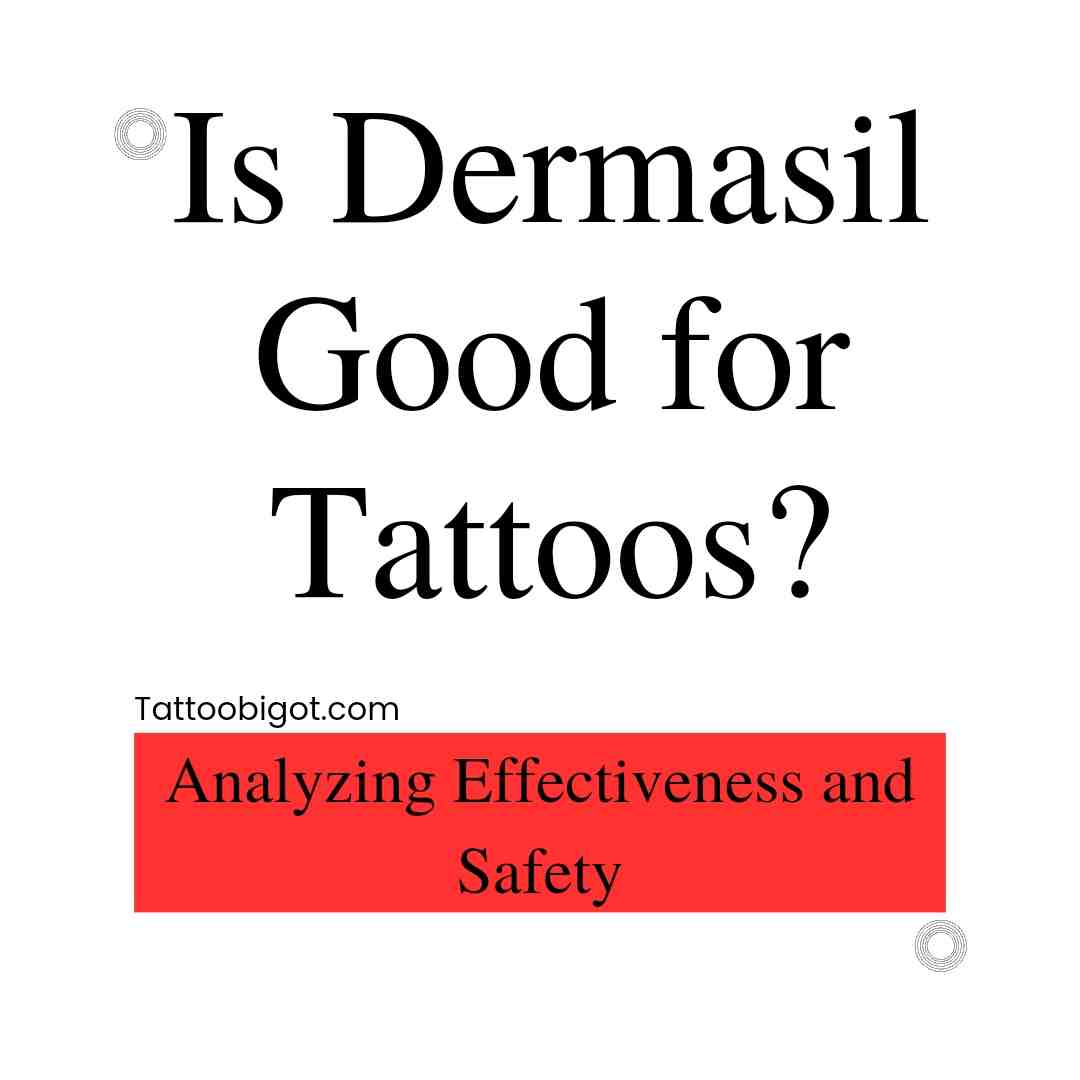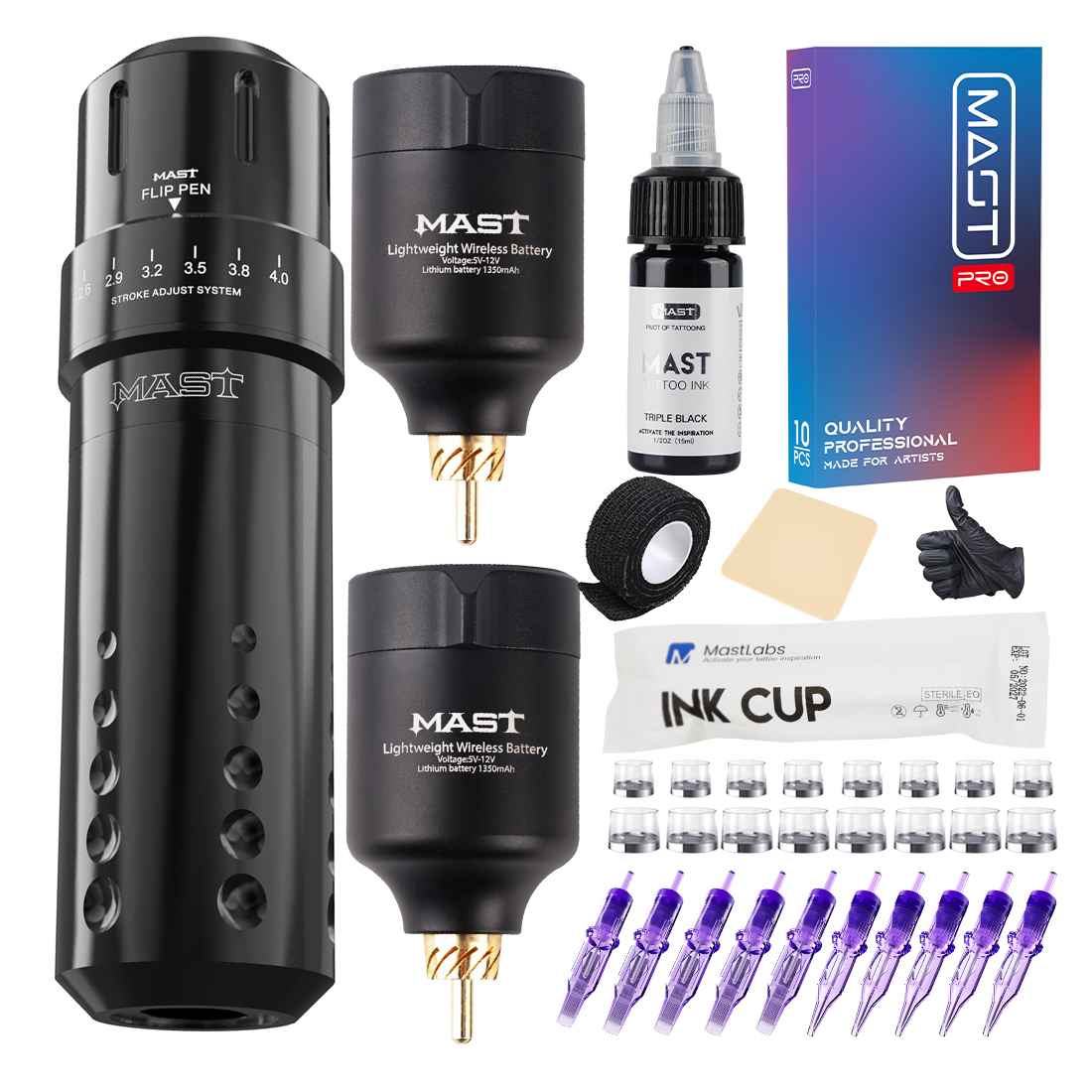Caring for a new tattoo includes keeping it moisturized as part of the aftercare routine. Dermasil is a commonly available skin care lotion that may seem like an option. But is Dermasil good for tattoos and is it beneficial and safe to use it on healing tattoos?
This article takes an in-depth look at Dermasil’s key ingredients, potential pros and cons for tattoo aftercare, proper usage recommendations, what dermatologists and artists say, and what to watch out for when using it on fresh ink.
Overview of Key Dermasil Ingredients
Dermasil lotions contain several key ingredients:
– Mineral Oil – Softens and moisturizes skin while providing a protective barrier against irritants.
– Petrolatum – Creates a hydrophobic seal to prevent moisture loss from the skin.
– Glycerin – Draws moisture into deeper skin layers and binds it to cells.
– Vitamin E – Soothes and protects against free radical damage while aiding elasticity.
– Collagen – Fills in wrinkles and aids skin regeneration.
– Hyaluronic Acid – Attracts and retains many times its weight in water for improved hydration.
– Fragrance – Masks base odor and provide a pleasant aroma.
Analyzing Potential Benefits of Dermasil for Tattoos
Several of the active ingredients in Dermasil offer advantages for tattoo aftercare:
– Petrolatum Barrier – Prevents plasma, blood and ink leaking out and dehydration during healing early on.
– Occlusion – Traps the skin’s natural moisture and prevents water evaporative loss through the damaged epidermis.
– Collagen Supply – Provides building blocks for new skin matrix formation during the regeneration process.
– Vitamin E – Soothes inflammation and interacts with free radicals created by tissue trauma to minimize damage.
– Hyaluronic Acid – Delivers hydration into deeper dermal layers where pigment particles reside.
The protective, moisturizing, and regenerative properties support the goals of tattoo healing when used properly.
Also Read: Will Gabapentin Help With Tattoo Pain? A Shocking Revelation
Examining the Potential Risks of Using Dermasil on Tattoos
However, some drawbacks must also be weighed when using Dermasil:
– Fragrance Irritation – Added perfumes and botanical extracts may cause skin sensitization reactions in freshly damaged tissue.
– Clogged Pores – The heavier occlusive ingredients may lead to blemishes, pimples, and infection risk in some individuals.
– Excessive Hydration – This can result in fluid buildup, plasma weeping, ink runoff, and poor scabbing if overapplied.
– Disrupted Ink Settling – The pulling action of moisturizers may distort pigments while they stabilize in the dermis.
– Limited Oxygenation – Petrolatum isolation can counteract the epidermis hardening and thickening needed for healing.
– Adverse Reactions – Vitamins, peptides, and acids may cause problems for sensitive skin types.
Also Read: Can I Use CeraVe Face Wash on My Tattoo? Find Out the Alarming Truth
Recommended Usage Precautions with Dermasil
To use Dermasil safely on tattoos, experts suggest:
– Perform a Patch Test – Try a small amount on an existing older tattoo and watch for reactions before broad application.
– Avoid Fragrances – Select Dermasil products without added perfumes or botanicals whenever possible.
– Use Sparingly – Only use a very thin layer of product to provide moisture without occluding.
– Wait Until Scabbing – Apply conservatively only after the initial scabbing has formed and started drying out.
– Observe Effects – Check for problems like blistering, weeping, enlarged scabbing, blurred ink lines, or pigment condensation.
– Stop if Adverse Effects – Discontinue use immediately if any negative skin reactions develop.
Also Read: Is Hawink Tattoo Ink Safe? A Close Look at Ingredients, Testing, and Long-Term Risks
Professional Perspectives on Dermasil for Tattoo Aftercare
Within the body art community, Dermasil receives mixed opinions:
“I don’t recommend petrolatum-heavy products like Dermasil early in the healing process as they can pull ink upward.” – Emmanuel, Tattoo Artist
“If a client insists on using Dermasil, I have them wait a full 4 weeks until the tattoo has stabilized before applying it.” – Sienna, Tattoo Parlor Owner.
“Dermasil can provide soothing hydration if used minimally and only on fully scabbed over tattoos.” – Luna, Piercer.
“I prefer plant oils over petrolatum creams, but a thin layer of Dermasil once dry scabbing develops is probably fine.” – Isaac, Tattoo Artist.
“The glycerin and hyaluronic acid may benefit, but the perfumes could be problematic. It’s not my first choice.” – Olivia, Tattoo Artist.
The consensus is that Dermasil may be moderately acceptable for established tattoos in the later healing stages with very reasonable use but is far from ideal for fresh new tattoos.
Also Read: Can I Use Jergens on My Tattoo? Exploring the Safety and Effects
Signs Dermasil May Be Causing Problems
Discontinue use immediately if any of the following occur:
– Redness, Warmth, Swelling – Signals potential infection or irritation.
– Leaking Ink and Plasma – The moisture barrier is too occlusive and prevents drainage.
– Enlarged Scabbing – Petrolatum is sealing in fluids and inhibiting proper drying.
– Blurred or Muted Ink – Colors appear faded or blurry, signaling distorted pigment settlement.
– Sudden Onset Itching – Indicates potential allergic reaction to ingredients.
– Acne Breakouts – Congested pores from occlusive ingredients blocking natural purging.
– Delayed Healing – Lingering tenderness and rawness beyond normal indicate impaired healing.
See a doctor promptly if any worrisome skin reactions develop so they can be treated quickly. Stop using Dermasil on the tattoo if in doubt.
Also Read: Is Hawink Tattoo Ink Good? An In-Depth Look at Quality, Safety, and Reviews
The Takeaway: Is Dermasil Good for Tattoos
Let’s summarize the key points of the question – is Dermasil good for tattoos? -. While some key Dermasil moisturizing ingredients may theoretically aid tattoo healing, its risks likely outweigh the potential benefits for fresh new ink.
The added fragrances, occlusion effects, and ingredient variability make it less than ideal. Gentler, cleaner plant oils and unscented lotions without petrolatum are far safer choices.
However, for established older tattoos in need of generalized moisturizing, very sparing thin Dermasil use after the first month may be acceptable if closely monitored. But always consult your artist and listen to your skin first.
Dermasil and Tattoos FAQs
Does Dermasil clog pores and cause pimples on tattoos?
Yes, the heavier petrolatum-based formula can clog pores in acne-prone individuals, leading to blemishes. Lighter lotions are preferable.
Can you put Dermasil on a new tattoo once the scab falls off?
A: It’s best to wait until at least 2-3 weeks after the scab naturally sloughs off to allow for deeper healing before applying heavier creams.
Is Dermasil good for tattoo scabbing and peeling skin?
No, Dermasil and similar petrolatum products are not recommended during the scabbing and flaking phase as they can inhibit proper drying.
Does Dermasil help new tattoos heal faster?
No, while it provides moisturization, Dermasil does not accelerate or improve the natural regeneration process itself. Avoid overuse.
Is Dermasil better or worse for tattoos than something like A+D ointment?
A+D is lighter and less occlusive, making it a preferable choice over thicker Dermasil creams during initial healing.
Can too much Dermasil pull the ink out of a new tattoo?
Yes, oversaturation can potentially leach out some freshly implanted pigments. Use the bare minimum needed.






